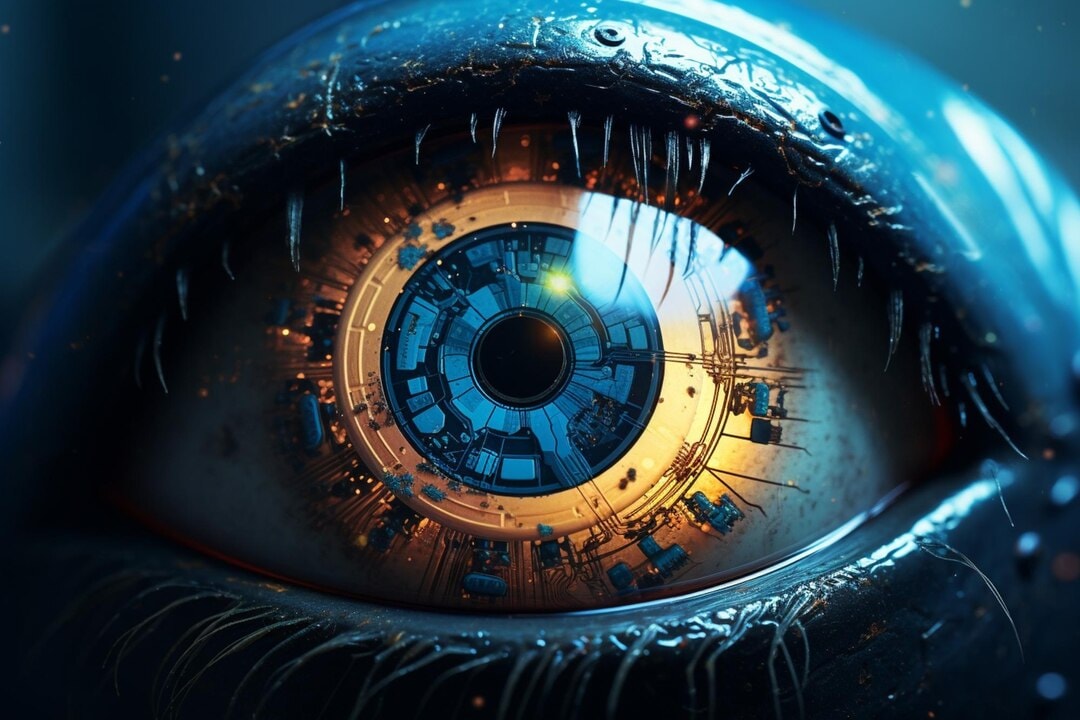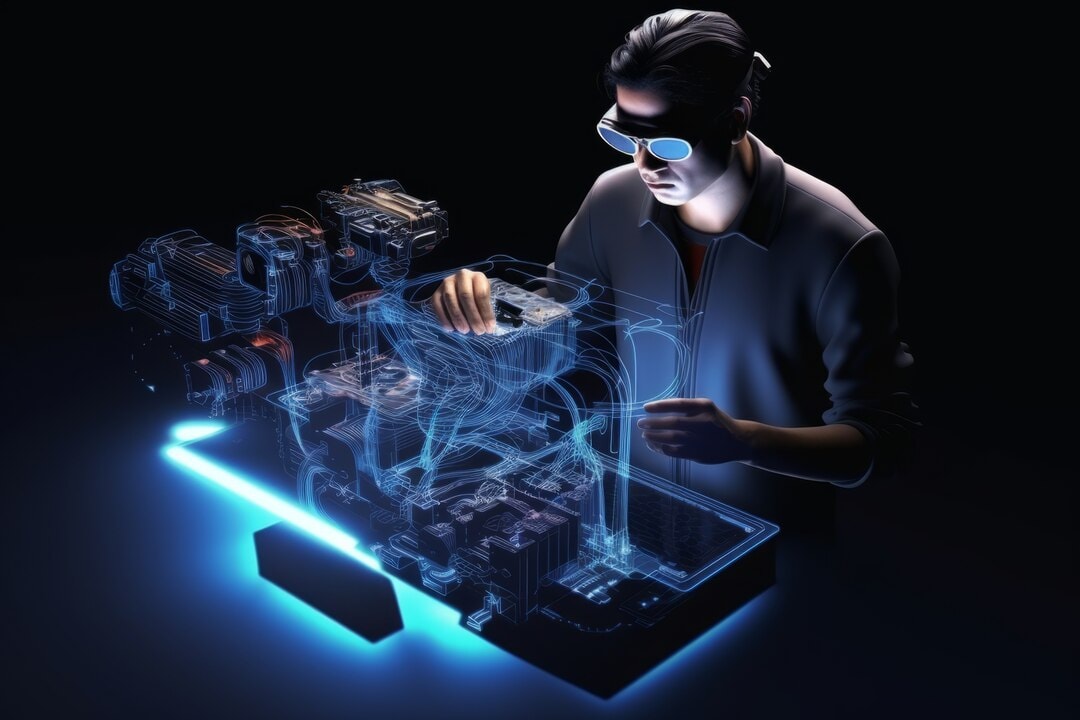Computer Vision Applications for Manufacturing
Vision AI drives predictive maintenance, quality control, and operational safety, streamlining production lines and minimising downtime in the era of Industry 4.0
Our Vision AI Solutions can Improve the Key Value-Drivers for your business
Explore the solutions with Proven ROI
Quality Control
Function | KPI | AI Enhancement |
Defect Detection | Defect Rate | Automated visual inspection to identify and classify production defects in real-time, reducing the defect rate |
Compliance and Standards | Compliance Rate | Ensure products meet quality standards and regulations through consistent monitoring |
Worker Safety and Ergonomics
Function | KPI | AI Enhancement |
Safety Compliance Monitoring | Workplace Accidents Rate | Monitor compliance with safety protocols to prevent accidents. |
Ergonomic Assessment | Employee Health Issues Rate | Analyze worker movements to identify and mitigate ergonomic risks |
Operational Efficiency
Function | KPI | AI Enhancement |
Process Optimisation | Machine Downtime Reduction | Monitor equipment to predict and prevent failures |
Production Throughput | Optimise production lines in real-time for increased throughput |
Supply Chain and Inventory Management
Function | KPI | AI Enhancement |
Inventory Accuracy | Inventory Levels Accuracy | Real-time tracking of materials and finished goods to improve inventory accuracy |
Supply Chain Visibility | Order Fulfillment Rate | Monitor and manage the flow of goods through the supply chain to optimize order fulfillment |
Environmental Sustainability
Function | KPI | AI Enhancement |
Waste Reduction | Waste Volume | Vision AI can differentiate between materials for recycling, re-use, or disposal, minimizing waste |
Energy Consumption | Energy Efficiency | Vision AI can monitor real-time occupancy and environmental conditions |
Enhance Efficiency, Boost Quality Control, and Lower Costs with Our Next-Generation Vision Systems for Production.
Computer Vision Introduction into Manufacturing
The manufacturing sector is headed towards digital transformation, where computer vision systems and AI-powered vision technologies are leading the charge.
These vision systems in manufacturing are a product of the Fourth Industrial Revolution.
They are designed for deep learning, machine learning algorithms, and computer vision models to decode visual information for automating different manufacturing processes.

Applications of computer vision have been numerous - ranging from traditional field use of quality control to computer vision market.
All are amongst the several ways that manufacturing efficiency is enhanced and costs and human inspection errors minimized. Some of the advantages are:
• Defect Detection and Quality Control – Detection of defects in real time for perfect production.
• Predictive Maintenance – Consists of monitoring equipment in order to prevent costly breakdowns.
• Process Automation: Controls robots and signifies object recognition and machine vision systems in enabling automated assembly lines.
• Intelligent inventory management: Enhances material tracking by minimizing waste.
Computer vision technology enables firms maximally advantage for enhanced production efficiency, even higher customer satisfaction, while competitively gaining share in the growing market of computer vision.
Key Applications of Computer Vision in Manufacturing
A. Defect Detection & Quality Control
AI-powered defect detection and quality inspection stand among the most revolutionary applications of computer vision.
With the aid of image recognition, optical character recognition, and deep learning models, even microscopic defects can be detected and identified in real-time.
Artificial Intelligence Vision Applications in Quality Control in Industry:
• In the car manufacturing sector, paint imperfections, misalignment, and surface roughness are inspected for.
• In the electronics sector, circuit boards and semiconductors are scanned using object tracking and image processing.
• Textile companies scan the textures of different fabrics to search for flaws and ensure high-quality standards.
• Machine vision systems are utilized in food production to perform visual inspection for detecting foreign objects and incorrect packaging.
Computer vision-based systems minimize the number of product recalls, enhance the level of customer satisfaction, and uphold high quality control standards for producers.
B. Process Automation and Robotics
Computer vision technology and AI vision provides instrumental assistance towards computer vision helps, enabling robots to:
• Perform precision assembly by detecting objects.
• Enhance pedestrian detection to protect against workplace injuries.
• Mandate adherence to personal protective equipment (PPE) regulations in dangerous operations.
The integration of AI-based vision systems enables manufacturers to enhance operational efficiency, minimize human vision fatigue, and increase production agility.
C. Predictive Maintenance and Equipment Monitoring
Inadvertent machine breakdown results in huge downtime and budget overruns.
AI vision and computer vision algorithms-powered computer vision projects prevent machine breakdown by:
• gathering the data from multiple sensors to inspect equipment wear and tear.
• identifying abnormalities in production equipment using computer vision algorithms.
• keeping maintenance costs down by preventing failures.
This cost-effectively provides improved efficiencies, long-term operational stability, and ultimately, enhanced production efficiencies.
D. Inventory and Supply Chain Optimization
Computer vision supports inventory management optimizations by:
• Real-time Products Availability Tracking.
• Traffic Density Assessment in Logistics for Minimizing Traction Risks in Transit.
• Cost Offset by avoiding Overstocking and Waste.
The next world-long product firm will utilize computer vision in manufacturin for application in optimizing supply chains, automating inventory monitoring, and enhancing customer satisfaction.
How Our Computer Vision System Works
Our computer vision-driven systems integrate AI algorithms, deep learning, and real-time data processing in an effort to advance production to the next level of smart manufacturing.
1. AI Algorithms & Deep Learning for Vision Processing
Use deep learning algorithms and convolution neural networks (CNNs) to:
• Process video data for intelligent detection of defects and anomalies.
• Interpret visual data captured using specialized cameras.
• Improve quality inspection through the automation of manual inspection tasks.
2. Seamless Integration with Manufacturing Processes
• Works with existing manufacturing equipment.
• Leverages computer vision models to track objects and processes image in real-time.
• Compatible with Robotic Automation, Augmented Reality, or Autonomous Vehicles.
3. Real-time Monitoring and Actionable Insights
• Offering real-time information needed for decision-making.
• Minimizing human error with computer vision methods.
• Enabling increased production efficiency by detecting the unachievable inefficiencies.
Why Choose Our Computer Vision Solution?

In order to stay ahead of the curve in the manufacturing sector, the manufacturers are demanding state-of-the-art AI solutions. Our manufacturing vision system offers:
Advanced Computer Vision Technology
• Defect detection and quality control using AI.
• Object tracking in real-time for smart manufacturing.
• Automated visual inspection for a higher level of production efficiency.
Scalable and Customizable Solutions
• Versatile for use in automotive, electronics, and food industries.
• Can integrate with various manufacturing processes and sensors.
• Machine learning algorithms for enhancing operational efficiency.
Demonstrated Results with Maximization of Manufacturing Efficiency
• 40% reduction-in-defects in computer vision-based systems.
• 25% boost in production efficiency by automation of manual inspection.
• 30% cost savings through predictive maintenance.
Simple Integration & Affordable Implementation
• Supports deep learning for typical image recognition.
• Relieves human vision fatigue in high-effort manufacturing settings.
• It assists in identifying neurological and musculoskeletal illnesses among workers, thereby further enhancing safety.
Manufacturers through embracing AI vision can enhance customer satisfaction and minimize defects and future-proof their manufacturing industry.

Case Studies & Success Stories
Case Study: AI Powered Automobiles Manufacturing Camera for Defect Detection
Problem: Top automobile manufacturing company struggled with manual inspection faults; the outcome was quality flaws.
Solution: It implemented the AI-powered machine vision system, which offered real-time quality monitoring.
Results:
• 40% fewer defects found using computer vision based systems.
• 20% rise in effective operational use within the vision systems for manufacturing.
• Increased production efficiency with computer vision automated inspection.
Case Study: Predictive Maintenance in Electronics Industry with AI Vision
Challenge: Failures of manufacturing equipment were extremely common in one of the top electronics manufacturers.
Solution: Implementation of computer vision models for predictive maintenance.
Results:
• Decrease of 30% in equipment downtime.
• Less maintenance cost and more production efficiency.
• Enhanced competitiveness of the manufacturing industry market.
The above instances make the reality that computer vision enables manufacturers to enhance efficiency and costs measure up to allow them to keep pace in a high-level competitive manufacturing market.
Start with AI Machine Vision Today!
Do you want to transform your manufacturing world with an AI-based vision system?
• Request a Free Consultation
• Schedule a Live Demo
Let us walk you through how our computer vision solutions might assist you in achieving maximum production efficiency, maximizing quality control, and future-proofing your manufacturing operations.
Get in Touch with Us Today! Contact Us